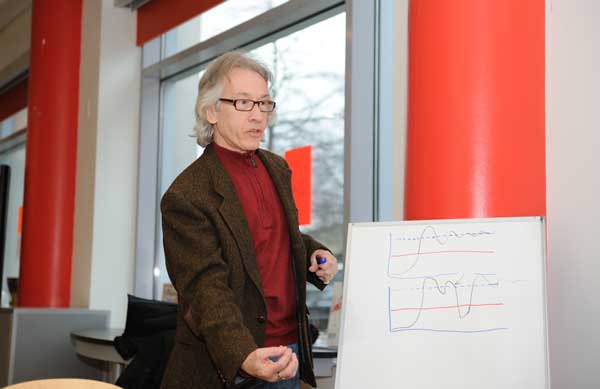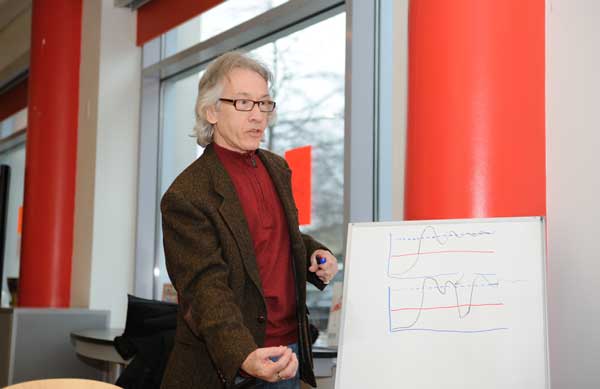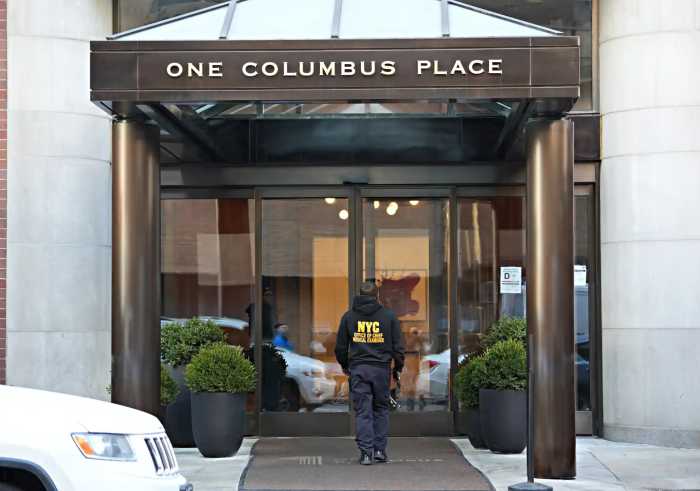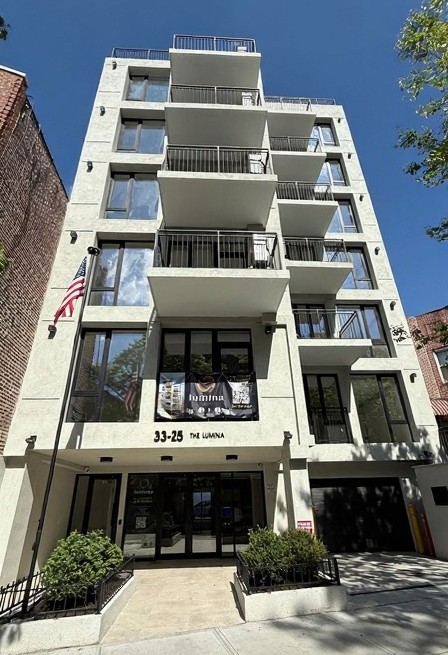 [/media-credit]
[/media-credit]
“The fact of the matter is that where there are humans, there are rats,” said Frantz. They need food, water and shelter to survive, and cities are great sources of food. Rats are also champion breeders. They reach sexual maturity at three to four months and then begin having litters with up to 12 pups. The gestation period for Norway rats (the kind that live in New York City) is 21 days; a few days after giving birth, the female breeds again.
“So rats are here to stay and are especially active when they are disturbed by construction,” said Frantz, “But that doesn’t mean that they have to be encouraged.”
“In a lot of urban rodent control, the primary effort goes into throwing poisons down rat holes,” said Frantz, “but that doesn’t work. It just stimulates the population to grow.”
“Any environment has a carrying capacity – meaning the absolute number of animals that an environment can sustain,” Frantz explained. “Usually the carrying capacity is higher than we would like. At some point as the population is growing, we start to notice. That’s called the ‘action level’ or the ‘tolerance level.’ It starts to bother us. When you remove individual animals from a population, the population drops in response to that effort. When you stop doing that, the rats have more food, water and shelter than they had before because there are fewer of them! They mate more often and more young survive. So the population shoots right back up.”
According to Frantz, “The ultimate intervention is education.” Depriving rats of food goes a long way to keeping the population under control. Don’t feed squirrels or birds, he advised, because what they don’t eat becomes rat food. Thoroughly clean up after dogs — rats eat feces. Wash recyclable food containers before putting them in the garbage. Be as careful with crumbs when eating in a park as you would be in your own home.
Frantz has been a consultant to the Battery Park City Parks Conservancy since 1995. “When I first came here all the rubbish containers were mesh with plastic bags inside,” he said. “The rats can literally go through the mesh, eat the garbage and come back out. The first thing I said to Tessa [Huxley, executive director of the Parks Conservancy] was, ‘All of these gotta go.’ That in itself made a tremendous difference.”
The mesh containers were replaced with solid metal garbage cans with domed lids and a hinged chute that rats can’t enter.
Frantz also urged that Battery Park City get trash compactors so that garbage wouldn’t be sitting out on the street overnight. “We were able to convince the Battery Park City Authority to fund this experimental compactor program with the sanitation department,” said Huxley. “We have a compactor on Warren Street and one at 75 Battery Place in our building. Every day between 2 p.m. and 2:30 p.m., the custodial staff lines up, pushing big, plastic bins on wheels.”
Commercial tenants must use private carters, but 17 out of 31 Battery Park City residential buildings participate in the compactor program. “Those that don’t participate do so because of the distance to the compactors,” Huxley said. “You have to transport the trash to the compactors. All the buildings in the north participate and so do those in the south. Gateway Plaza does not participate. Neither do the buildings on the north side of Rector Park.”
Rats are primarily nocturnal, said Frantz, so it is important that no garbage be left out on the street overnight. Trash pick-up occurs in the mornings.
“If scheduling is that much of an issue, then use some of the space in the building to make refrigerated, pest-proof storage,” Frantz advised.
“Tenants in the buildings could put a little pressure on their building managers,” Huxley suggested.
In addition to addressing the availability of food, the B.P.C. Parks Conservancy attempts to deprive neighborhood rats of shelter. “Our staff fills rat burrows with gravel. We do everything we can to make [B.P.C.] inhospitable to pests,” Huxley said.






































